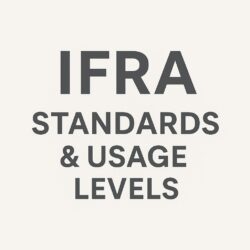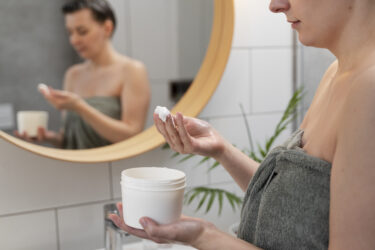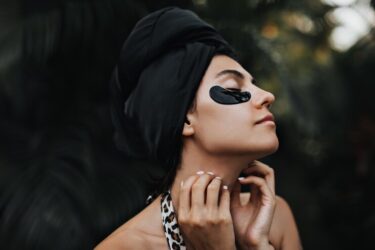Retinol in Skincare:
Retinol in skincare has become the holy grail, praised by dermatologists and beauty enthusiasts alike for its transformative effects. But with so much information (and misinformation) online, it’s easy to feel overwhelmed. What exactly does retinol do? How do you use it without irritating your skin? And why is it a must-have in your skincare routine? In this comprehensive guide, we’ll break down everything you need to know about skin care cosmetics retinol—from its science-backed benefits to practical tips for beginners. Let’s dive in!
What Is Retinol?
Retinol is a derivative of vitamin A, a powerhouse ingredient known for its ability to boost collagen production, speed up cell turnover, and combat signs of aging. It belongs to the retinoid family, which includes prescription-strength formulas like tretinoin. However, retinol is available in over-the-counter skincare products, making it accessible for everyday use.

How Does Retinol Work?
Retinol is a powerful skincare ingredient that works at a cellular level to improve skin texture, tone, and overall health. When applied, it:
- Penetrates the outer layer of the skin (epidermis) and is converted into retinoic acid, its active form.
- Binds to skin cell receptors, triggering a range of skin-renewing processes that enhance collagen production, accelerate cell turnover, and unclog pores.
Key Benefits of Retinol’s Mechanism of Action
✔️ Stimulates collagen synthesis
- Boosts collagen and elastin production, which helps reduce fine lines, wrinkles, and sagging.
- Strengthens the skin’s structure, improving firmness and elasticity.
✔️ Accelerates cell renewal
- Speeds up the skin’s natural shedding and regeneration process, replacing damaged cells with new, healthy ones.
- Helps fade dark spots, hyperpigmentation, and uneven skin tone, revealing a brighter, more even complexion.
✔️ Unclogs pores and prevents acne
- Exfoliates deep within the skin, removing dead skin cells and excess oil that cause breakouts.
- Keeps pores clear and refined, preventing acne and improving overall skin texture.
- Reduces post-acne marks and scars by promoting faster skin healing.
By incorporating retinol in skincare routine, you can achieve smoother, firmer, and more radiant skin while addressing concerns like aging, pigmentation, and acne.

Understanding pH Balance in Skincare: Retinol works best when formulated at the right pH level to maintain its stability and effectiveness. To learn more about the role of pH in skincare and cosmetics, check out this comprehensive guide.
Why Retinol in Skincare a Game-Changer?
1. Fights Signs of Aging
Retinol is one of the most researched anti-aging ingredients, clinically proven to:
- Reduce wrinkles by up to 40% with consistent use (Journal of Cosmetic Dermatology).
- Boost collagen production, helping to smooth fine lines and improve skin texture.
- Enhance skin elasticity, making the skin appear firmer, plumper, and more youthful over time.
2. Tackles Acne and Breakouts
Retinol helps keep breakouts under control by:
- Regulating sebum production, preventing excess oil buildup.
- Exfoliating dead skin cells, keeping pores clear and reducing congestion.
- Fading post-acne scars, improving skin tone and texture.
- Effectively treating hormonal acne, reducing inflammation and preventing future breakouts.
3. Brightens Dull Skin
Struggling with uneven skin tone and dark spots? Retinol:
- Inhibits melanin production, helping fade sunspots, melasma, and discoloration.
- Promotes skin cell turnover, replacing damaged skin cells with fresh, healthy ones.
- Evens out complexion, giving skin a radiant, youthful glow.
How to Use Retinol in Skincare Correctly: A Step-by-Step Guide
Step 1: Start Slowly
- Begin with a low concentration (0.25%–0.3%) if you’re new to retinol.
- Apply it 2–3 nights a week, then gradually increase frequency as your skin adapts.
Pro Tip:
- Pair retinol with a moisturizer to minimize dryness.
- Use the “sandwich method”: apply moisturizer → retinol → moisturizer to protect the skin barrier.
Step 2: Follow a Nighttime Routine
- Retinol breaks down in sunlight, so apply it at night only.
- Routine:
- Cleanse your face to remove dirt and excess oil.
- (Optional) Apply a toner.
- Apply retinol to dry skin for even absorption.
- Finish with a hydrating moisturizer to lock in hydration.
Step 3: Avoid Harsh Ingredients
To prevent irritation, never mix retinol with:
- Vitamin C – Use it in the morning instead.
- AHAs/BHAs (glycolic or salicylic acid) – Combining them with retinol can cause excessive dryness and irritation.
By following these steps, you can safely incorporate retinol into your skincare routine for smoother, clearer, and more youthful-looking skin.

Common Retinol Side Effects and How to Manage Them
1. Dryness and Flaking
During the initial “retinization” phase (typically the first 2–6 weeks of use), it’s common to experience dryness, peeling, or flaking as your skin adjusts. This happens because retinol increases cell turnover, shedding dead skin faster than usual.
How to manage:
- Use a hydrating serum with hyaluronic acid to replenish moisture.
- Apply a fragrance-free, barrier-repairing moisturizer to soothe and protect the skin.
- Consider the “sandwich method” (moisturizer → retinol → moisturizer) to reduce irritation.
- If flaking becomes excessive, reduce application frequency to every other night or 2–3 times a week.
2. Redness or Sensitivity
Some people experience redness, irritation, or increased skin sensitivity when first using retinol in skincare. This is often due to overuse or applying it on damp skin, which increases absorption and potential irritation.
How to manage:
- Scale back application to once weekly, then gradually increase as your skin builds tolerance.
- Avoid physical scrubs and harsh exfoliants like sugar scrubs or cleansing brushes.
- Opt for soothing ingredients like ceramides, niacinamide, centella asiatica, or aloe vera to calm inflammation.
- If irritation persists, try using a lower concentration (0.25%–0.3%) until your skin adjusts.
3. Sun Sensitivity
Retinol thins the outermost layer of the skin (stratum corneum), making it more vulnerable to UV damage. This means even minimal sun exposure can lead to burns, redness, or pigmentation issues.
How to manage:
- Apply a broad-spectrum SPF 30+ sunscreen every morning, even on cloudy days.
- Reapply sunscreen every 2 hours when outdoors for prolonged periods.
- Wear protective clothing, such as a hat and sunglasses, to minimize UV exposure.
- Consider using retinol only at night and pairing it with antioxidants like vitamin C in the morning for extra protection.
By following these precautions, you can enjoy the benefits of retinol while minimizing side effects and keeping your skin healthy!
Choosing the Best Retinol Product for Your Skin
For Sensitive Skin
If you have sensitive skin, using a strong retinol product can cause irritation, redness, or peeling. To minimize these effects, opt for:
- Encapsulated retinol – A slow-release form of retinol that reduces irritation while still delivering benefits.
- Soothing ingredients like oat extract and niacinamide, which help calm redness and strengthen the skin barrier.
- Gentle formulations that focus on hydration and barrier protection to prevent dryness.
Product Pick: Myoras Retinol Serum with Chamomile – Formulated with soothing chamomile to reduce irritation while promoting skin renewal.
For Aging Skin
If your primary goal is to address fine lines, wrinkles, and loss of elasticity, look for:
- 1% retinol – A higher concentration that effectively boosts cell turnover and reduces visible signs of aging.
- Peptides – Help stimulate collagen production and improve skin firmness.
- Hydrating ingredients – Prevent excessive dryness and enhance skin suppleness.
Product Pick: Fran Wilson Retinol Night Cream – A rich, nourishing formula with 1% retinol and peptides to improve skin texture and elasticity.
For Oily/Acne-Prone Skin
If you’re dealing with excess oil, breakouts, or acne scars, the right retinol formula can help by:
- Regulating sebum production, reducing oiliness and clogged pores.
- Choosing a lightweight gel or serum – Avoid heavy creams that may clog pores or feel greasy.
- Including salicylic acid – Helps unclog pores and reduce acne breakouts, but should be used on alternate nights with retinol to prevent irritation.
Product Pick: A lightweight gel-based retinol serum with salicylic acid for smoother, clearer skin.
By selecting the right retinol formulation based on your skin type, you can achieve maximum benefits while minimizing irritation and side effects.

Retinol Myths vs. Facts
Myth 1: “Retinol Thins Your Skin”
🔹 Fact: This is a common misconception! Retinol actually thickens the dermis (the deeper layer of the skin) over time.
- It stimulates collagen production, making the skin stronger and firmer.
- Regular use improves skin density, reducing fine lines and signs of aging.
- While retinol may cause temporary peeling or dryness at first, this does not mean your skin is thinning—it’s simply part of the renewal process.
Myth 2: “You Can’t Use Retinol in Your 20s”
🔹 Fact: Retinol isn’t just for mature skin—it’s preventive and beneficial at any age!
- Starting retinol in your mid-20s or early 30s can help delay wrinkle formation.
- It helps maintain collagen levels, preventing premature skin aging.
- Using retinol early reduces acne, refines pores, and keeps skin smooth, making it a great long-term investment for healthy skin.
By understanding these facts, you can confidently use retinol in skincare routine and enjoy its anti-aging and skin-repairing benefits without falling for myths!
FAQs About Retinol in Skincare
1. Can I Use Retinol Every Day?
Yes, but only after building tolerance. Begin with 2–3 nights weekly and increase gradually.
2. How Long Does Retinol Take to Work?
Visible results appear in 8–12 weeks. Consistency is key!
3. Can Pregnant Women Use Retinol?
No. Retinol is not safe during pregnancy or breastfeeding—opt for bakuchiol instead.
4. What’s the Difference Between Retinol and Retinoids?
Retinoids are a broader category. Retinol is a milder, over-the-counter type, while prescription retinoids (like tretinoin) are stronger.
Final Thoughts: Unlock Your Skin’s Potential with Retinol
Retinol isn’t just a trend—it’s a science-backed solution for healthier, younger-looking skin. Whether you’re battling acne, dark spots, or fine lines, incorporating skin care cosmetics retinol into your routine can deliver transformative results. Remember: patience and consistency are your best allies. Start slow, listen to your skin, and don’t skip sunscreen!
Want to dive deeper into the benefits of retinol? Check out this comprehensive resource on Retinol Treatment for expert insights, product recommendations, and skincare tips!
Ready to glow? Share this guide with a friend, and let us know your retinol journey in the comments below!



